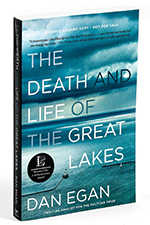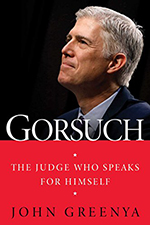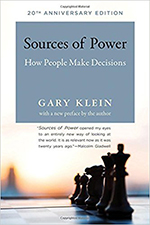 VERDICT: Touchdown!
VERDICT: Touchdown!
The Death and Life of the Great Lakes
By Dan Egan (New York, NY: W.W. Norton & Co., 2017). 384 pgs. $19. Order, www.amazon.com.
Reviewed by Cara Coburn Faris
With tales of canals, ships, fish, mollusks, and algae, The Death and Life of the Great Lakes reveals how human choices regarding the use and management of our water resources has affected Lakes Superior, Michigan, Huron, Erie, and Ontario. This book about carelessness and unintended consequences is at times chilling, but rather than preaching, the author weaves a history that is both educational and highly entertaining.
Take author Dan Egan’s treatment of zebra and quagga mussels, one of the Great Lakes’ most costly invasive-species catastrophes to date. In the late 19th and early 20th centuries, naturalists wrote of the “rapid propagation” and “tenacity of life” of these “successful molluscan colonists,” of which “[t]here is entirely too much reckless dumping … into our ponds and streams” (p. 112-13). Thus began the call to regulate ballast water, the animal soup that huge tankers brought – and still bring – in with them as they navigate from the Atlantic Ocean down the St. Lawrence Seaway and into the Great Lakes.
Egan writes graciously of the successes of the federal Clean Water Act (1972), including its rehabilitation of Ohio’s Cuyahoga River and its transformation of one-third of U.S. waters from unsafe for fishing and swimming to safe.
Want to Review a Book?
Please request a book and writing guidelines from Wisconsin Lawyer managing editor Karlé Lester, at klester@wisbar.org or (608) 250-6127. Reviewers may keep the book reviewed. Reviews of about 500 words are due within 45 days of receiving the book. Reviews are published, space permitting, in the order received and may be edited for length and clarity.
However, a central theme of the book is the Clean Water Act’s continual failure, despite opportunity after opportunity, to regulate ballast water, illustrating the dangers of dismissing hard scientific evidence and externalities in favor of myopic environmental laws and policies. To date, the zebra and quagga mussel invasion has clogged industrial and residential machinery to the tune of billions of dollars, not to mention the estimated $200 million annual cost to fisheries and the recreational industry and the projected $500 million annual cost should the mussels reach the Pacific Northwest’s waterways, a not unlikely scenario.
While the Great Lakes have been “ecologically naïve” (p. 11) in the face of mussels and other biological threats, policy makers have certainly been economically naïve. But Egan does not view the current state as an end game. Humans and ecosystems have a hopeful tool in adaptive management, which Lana Pollock, chair of the International Joint Commission, describes as “continually measuring, learning, adjusting” (p. 298). Returning frequently to this theme, the book offers paths forward, if we are willing to do the hard work of perpetual analysis and informed planning.
Egan, a Milwaukee-based journalist, delves into hydrology, nutrients, microorganisms, sea lampreys, alewives, wetlands, and his beloved sport fish. He quotes from scientists and engineers and writes long sentences – with skill. While the scientific detail might bog down the less aquatically inclined reader, I challenge you to skim through sections without missing a juicy story that is clearly for general consumption.
One of my favorites was of the Olin family slogging west from New York and finally cresting a ridge to see Wisconsin forests and prairies below: “‘I thought this the most lovely sight I had ever beheld,” Chauncy [Olin] recalled. ‘The country looked more like a modern park than anything else. How beautiful to look upon. How strange. We said in our enthusiasm, who did this?’” (p. 258). This was Waukesha.
I also loved the story of a B-29 bomber crashing into Lake Mead. And did you know that Tennessee and Georgia have been fighting over a border since 1818? These are just a few of the treasures packed into this deeply researched and fascinating book. If you appreciate high-quality nonfiction, particularly history and adventure tales, I recommend this book for you. If your practice involves environmental law and policy, it’s a must-read.
Cara Coburn Faris, U.W. 2005, MS water resources management U.W. 2010, wears several hats, including corporate counsel for a civil engineering firm and consultant for environmental nonprofits. Since salmon fishing on Lake Michigan as a kid, she now resides squarely in the catch-and-release camp.
 VERDICT: Not for Me, Maybe for You
VERDICT: Not for Me, Maybe for You
Gorsuch: The Judge Who Speaks for Himself
By John Greenya (New York, NY: Threshold Editions/Simon & Schuster Inc., 2018). 257 pgs. $16.51. Order, www.amazon.com.
Reviewed by Daniel Schmeeckle
This biography of the U.S. Supreme Court’s most recent lifetime appointee is impressive, not for its content, but for what is left unsaid. The elephant that cannot be ignored is the fact that Justice Gorsuch and his immediate family have been reticent with the press and were not interviewed for this biography. This said, sympathy should be given to the author, who faced the formidable task of writing about an individual who speaks only through his judicial opinions.
The title, The Judge Who Speaks for Himself, is ironic given how little we know about Justice Gorsuch outside his published works. To this point, the dust jacket references the following statement made to Justice Gorsuch at his confirmation hearing: “We need to know what’s in your heart.” Despite the author’s excellent research and review of Justice Gorsuch’s public work, this book does not provide an answer to the fundamental question of what is in the justice’s heart.
The closest we get to understanding Justice Gorsuch is through the lens of his mother, Anne Gorsuch Burford, who headed the Environmental Protection Agency during the Reagan administration. Surprisingly, the author of this biography, John Greenya, also coauthored Are You Tough Enough, the biography of Justice Gorsuch’s mother during her time at the EPA. At one point, the author shares an anecdote that Justice Gorsuch’s political views “were a mirror image” of his mother’s. Again, any criticism of the author for not fully understanding his subject is tempered by the fact that Justice Gorsuch is portrayed as a man who plays his cards extremely close to his chest. Indeed, this biography may have been more appropriately titled The Judge Who Internalizes because the author repeatedly chooses that word to describe Justice Gorsuch.
From what we can gather about the newest Supreme Court justice, the book does a good job of portraying a nuanced, intelligent, hard-working judge whose collegiality is well recognized regardless of political bent.
Daniel Schmeeckle, Minnesota 2010, is in practice with Anderson O’Brien in Stevens Point.
 VERDICT: It’s a Keeper
VERDICT: It’s a Keeper
Sources of Power, 20th Anniversary Edition: How People Make Decisions
By Gary Klein (Cambridge, MA: The MIT Press, 2017). 360 pgs. $29.95. Order, mitpress-orders@mit.edu.
Reviewed by Judge Mary Kuhnmuench
Most of us make hundreds of decisions every day; from the moment we wake until the moment evening slumber begins. Most of those decisions are made as naturally as breathing in and breathing out – “What should I wear today?” “What route should I take to work?” “English muffin or Raisin Bran?” Few of us, however, are ever called on to make life-and-death decisions such as the ones made by firefighters racing up the steps of the Twin Towers on 9/11 or Captain “Sully” Sullenberger landing a disabled commercial aircraft on the Hudson River instead of returning to LaGuardia Airport in January 2009.
The 20th anniversary edition of Gary Klein’s book, Sources of Power: How People Make Decisions, continues to provide a very compelling real-life study of how individuals in high-risk occupations make split-second decisions that save lives. While most of the early studies of high-stakes decision making occurred within a sterile laboratory with predetermined tests, Klein, a cognitive psychologist, took a different approach by venturing directly into the field and came back with more than a decade’s worth of observations of fire commanders, fighter pilots, military personnel, and other first responders. Those first-hand observations, replete with anecdote after anecdote from actual high-risk decision makers, including the crew of Apollo 13, make the book a far more interesting read and the analysis more credible.
Much of Klein’s research is focused on the military and first responders, and the reader is treated to a first-row seat to the decisions made by a team of firefighters attempting to rescue a woman from a car hanging off the side of a bridge and an aircraft carrier commander ordering his gunners to shoot down an unidentified aircraft. Klein uses those anecdotes to help illustrate his theory that most high-risk, split-second decisions are made by individuals relying on intuition rooted in prior experience. And, perhaps most interesting, we learn that a commonality among these types of decision makers is their willingness to quickly overcome their own uncertainty.
How important is Klein’s study? It’s used as a training manual in hundreds of fire departments across the country, and in academia, many of the top-tier business schools have made it required reading in their MBA programs. But the most impressive recommendation comes directly from the Pentagon and the White House, where Gary Klein and Nobel laureate Daniel Kahneman were asked to collaborate and serve on a team that redesigned the White House Situation Room to support more effective decision making. That fact alone makes this book “a keeper.”
Hon. Mary M. Kuhnmuench, New England 1983, is on the Milwaukee County Circuit Court and immediate past president of the Wisconsin Trial Judges Association.
.jpg) VERDICT: Touchdown!
VERDICT: Touchdown!
Business and Commercial Litigation in Federal Courts (Fourth Edition)
By Robert L. Haig, editor-in-chief, and 296 authors (New York, NY: Thomson Reuters & ABA Litigation Section, 2016-17 with annual updates). 15 vols., plus CD-ROM. 17,142 pgs. $1,811. Order, www.thomsonreuters.com.
Reviewed by Nicholas C. Zales
When I reviewed the third edition of Business and Commercial Litigation in Federal Courts I wrote that it “sets the standard in treatises on federal court litigation” (Wisconsin Lawyer, Nov. 2014). New York lawyer and editor Bob Haig’s fourth edition sets the bar even higher with 25 new chapters containing 4,400 additional pages. Likewise, a number of chapters from the third edition have been enlarged and developed to reflect changes in the law.
Expanding from 12 to 15 volumes, this publication continues to be “the” treatise on federal court business litigation. It is equally useful for state court business litigation. The new chapters cover a wide range of topics that follow changes in the law and technology. They include chapters on social media, civil justice reform, teaching litigation skills, cross-border litigation, regulatory litigation, civil rights, fraud, and advertising, media, and publishing. It covers every possible aspect related to a federal trial: an immense amount of procedural and substantive law. If there is a matter that can be brought in federal court, this treatise covers it and covers it well.
This book is written by litigators for litigators. It provides you with practical, useful advice that will make you a better lawyer. It blends substantive and procedural law with extensive advice from experts on how to use the law to your advantage. In-house counsel will appreciate its clear explanation of a federal lawsuit and suggestions on controlling costs. Written by 296 distinguished federal judges and litigators, the treatise not only sets forth the procedural and substantive law in detail but also tells you what you can do with it. The authors offer many valuable strategic tips on how to use federal rules and law. This treatise does not just tell you what the law is. It shows you how to use it.
It covers all aspects of federal trials, providing guidance on all phases of litigation, including investigation, pleadings, motions, discovery, trials, appeals, settlement, and the enforcement of judgments. New chapters on social media and the use of litigation technology and the admission of computer-generated evidence are excellent. Together, the volumes offer a self-contained library of procedure, trial advocacy, substantive law, and advice written by practicing attorneys and judges.
One of the treatise’s best features are the “Practice Aids” sections at the close of each chapter. There, useful, detailed procedural and substantive law checklists are provided with reference to the applicable book chapter. They help you evaluate and prepare your case.
Also included are a treasure trove of essential litigation forms covering pleadings, motions, and literally anything that may arise before litigation, at trial, and post-judgment. These expertly crafted checklists and forms alone make this book a winner. They help you make sure you are not missing anything and provide a draft of forms you can adapt to your own case. The forms are included in editable Rich Text Format form on a CD-ROM. These are not simply blank forms where you must determine how to draft a matter. They are fully fleshed-out sample forms that greatly ease your work on creating pleadings, motions, and other documents to fit your case. Being able to see what a document should look like and then be able to easily adapt it to your case will make you a more efficient lawyer.
The treatise contains an impressive amount of procedural and substantive authority. It contains many references to West’s Key Number Digest, A.L.R., Am. Jur. 2d, C.J.S. and others. If you have just one federal case, you want to have this treatise. It will pay for itself in terms of time, research, and strategy. Even if you only practice state business law, you will find a lot of useful information, because many state rules and procedures are based on federal law.
Nicholas C. Zales, Marquette 1989, operates Zales Law Office, Milwaukee, focusing on business litigation and appeals. He is a member of the State Bar of Wisconsin Board of Governors.
